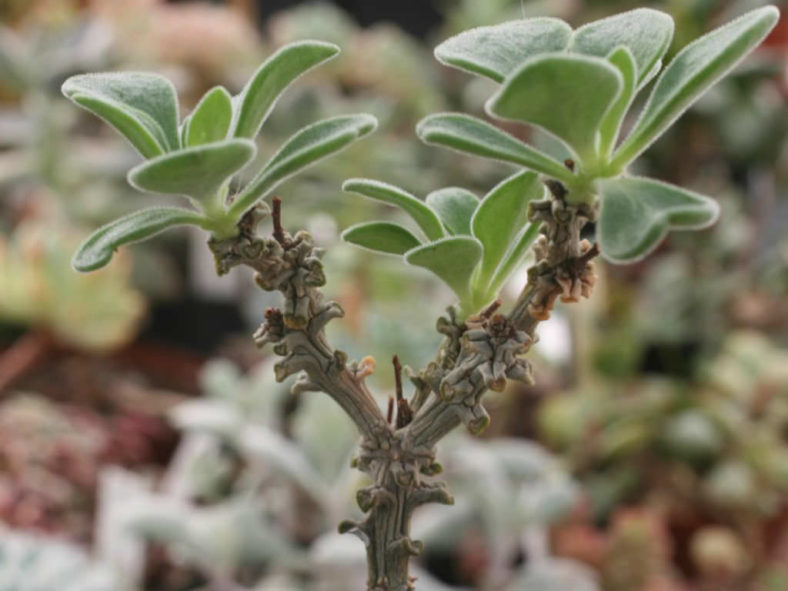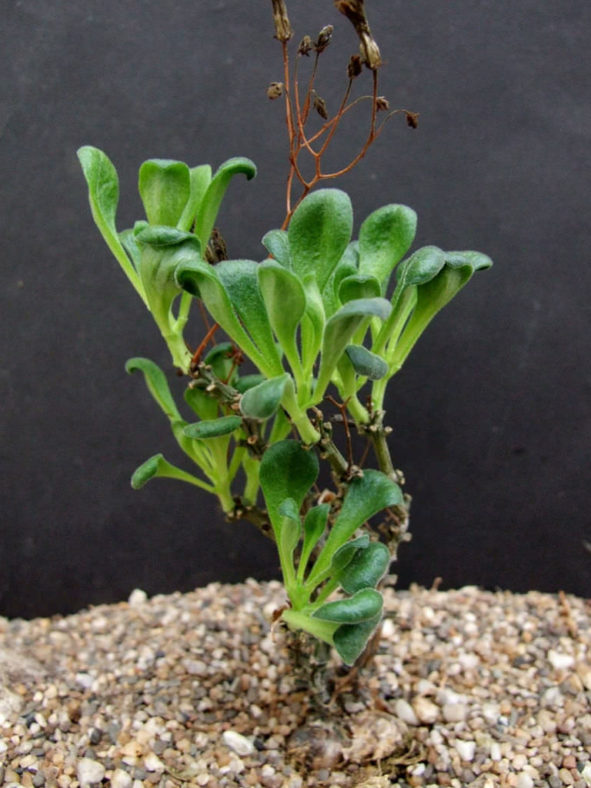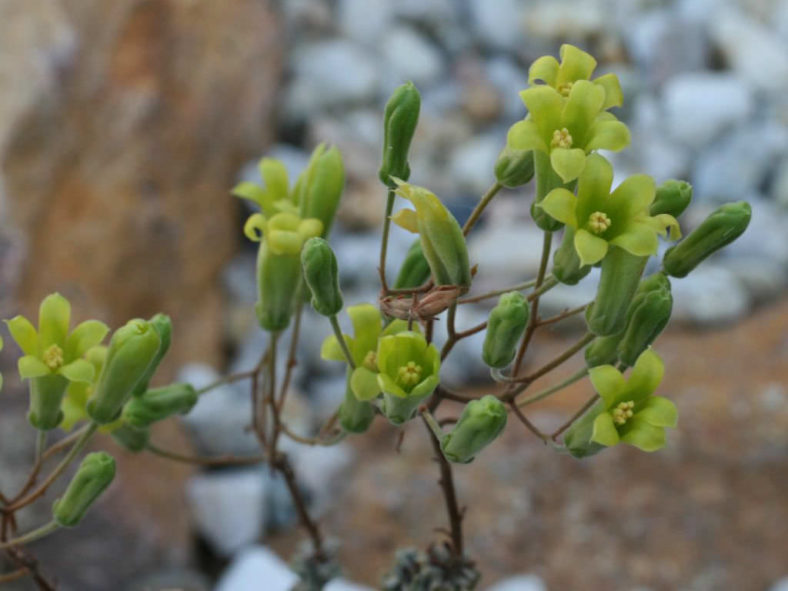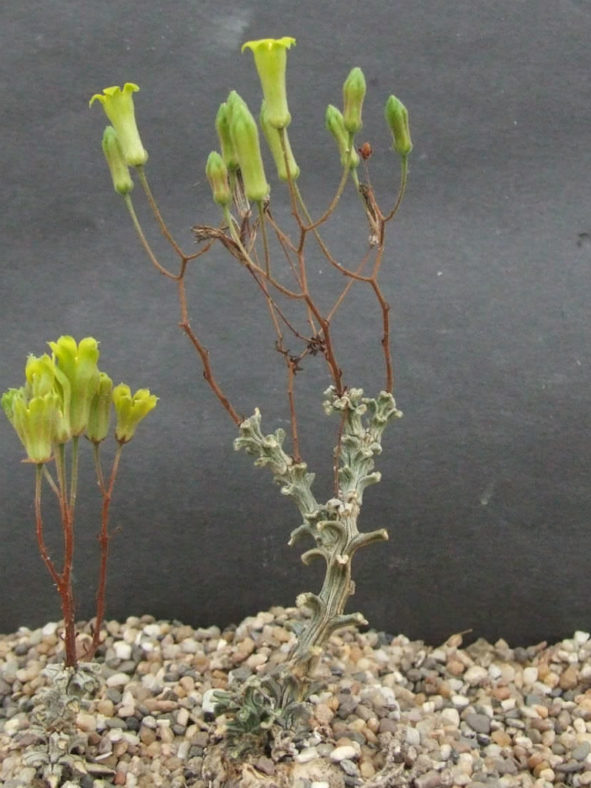Scientific Name
Tylecodon bayeri van Jaarsv.
Common Name(s)
Ribbed Butterbush
Synonym(s)
Tylecodon mallei
Scientific Classification
Family: Crassulaceae
Subfamily: Kalanchoideae
Genus: Tylecodon
Etymology
The specific epithet "bayeri (BAY-er-ee)" honors Martin Bruce Bayer (1935-2023), a South African agricultural entomologist, botanist, explorer, and the 4th curator of the Karoo Botanical Garden in Worcester, Western Cape, South Africa.
Origin
Tylecodon bayeri is native to South Africa (Northern Cape).
Description
Tylecodon bayeri is a small succulent with a few slender branches that grow from a tuberous base. The branches are grey, ribbed from the decurrent leaf bases, and can grow up to 7.2 inches (18 cm) long and 0.1 inches (0.25 cm) in diameter. The tuber is ball-shaped, has grey-brown flaking bark, and can reach up to 1 inch (2.5 cm) in diameter. The leaves are green, hairy, and egg-shaped, measuring up to 1.6 inches (4 cm) long and 1.2 inches (3 cm) wide.
The flowers are tubular, yellow to brownish, covered with short hairs, and can reach up to 0.5 inches (1.3 cm) in length. They appear on branched inflorescences that can grow up to 1.6 inches (4 cm) long when the plant sheds its leaves in mid-summer.

How to Grow and Care for Tylecodon bayeri
Soil: A well-draining soil mix is the key to healthy Tylecodon. Poor drainage and overwatering most commonly cause root rot in both indoor and outdoor plants.
Light: Tylecodons can survive direct sunlight exposure without problems, but they will grow beautifully in shadow.
Hardiness: Tylecodon bayeri can withstand temperatures as low as 25 to 50 °F (-3.9 to 10 °C), USDA hardiness zones 9b to 11b.
Watering: As winter is the growing season, Tylecodons require careful watering from winter until the spring. Get the soil wet, and then wait until it is dry before watering again. In the summer, reduce watering to once per month.
Fertilizing: Use liquid fertilizer for cacti and other succulents in winter.
Repotting: You do not need to repot these plants often. You can do it when the container becomes too small or shallow.
Propagation: Tylecodons can be cultivated either by seed or by cuttings.
Learn more at How to Grow and Care for Tylecodon.
Toxicity of Tylecodon bayeri
Tylecodon species are adapted to avoid animal predation being poisonous. Therefore, keep them away from children, pets, and livestock.
Links
- Back to genus Tylecodon
- Succupedia: Browse succulents by Scientific Name, Common Name, Genus, Family, USDA Hardiness Zone, Origin, or cacti by Genus
Photo Gallery
Click on a photo to see a larger version.


